Resources
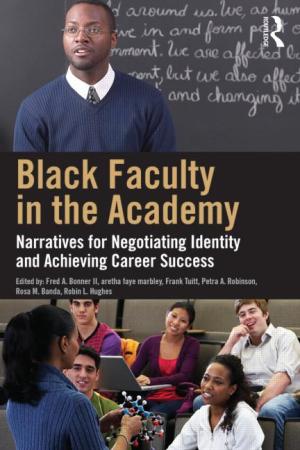
The editors and selected contributors provide cogent insights on navigating academic environments as faculty of color. Critical Race Theory (CRT) is a conceptual and methodological lens to identify issues of racial incongruity (1). The strength of this volume of 13 chapters is the use of first-person Scholarly Personal Narratives (SPN) by contributing black scholars to analyze particular experiences and modes for survival, if not reform in educational institutions (3). In the introduction, editors Truitt and Bonner review the evolution of CRT to conceptualize “core thematic trends” (4) that collectively structure the narrative content and divide the volume into three parts. Part 1 is titled “Black Faculty: Navigating Daily Encounters with Racism.” Chapters 2 through 5 are narratives on interpersonal experiences in institutional climates. In chapter 2, Giles details CRT to analyze presumptive behaviors encountered since his formative years to his current professorial appointment. Moore focuses on racial microaggressions in chapter 3 (24) to note environmental similarities of his upbringing in a predominately white community and his exposure to social systems in the work environment at a predominately white academy. Lewis co-authors chapter 4 to highlight “insider-outsider experiences” (33) as a British black man, while Helm highlights her duality in America as black female navigating racialized gender stereotypes that undermine professional credibility (35). In chapter 5, Shavers, Butler, and Moore cite “cultural taxation” (42), a phenomena of commodification risks for underrepresented black faculty confounded by excessive service project requirements as token institutional representatives. In Part II, “Black Faculty, Meaning Making through Interdisciplinary and Intersectional Approaches,” chapters 6 through 9 offer multidisciplinary intersectional approaches to recognize formal institutional rules and navigate informal expectations. Five contributors to chapter 6 – marbley, Rouson, Li, Huang, and Taylor – use a multiple theoretical lens to assess microaggression in performance-compliance to diversity expectations, parity of scholarship praxis, and tenure requirements. Croom and Patton overlay “critical race feminism” (66) onto CRT analysis in chapter 7 to identify dynamics that black female academicians encounter from black and white colleagues. Similarly, in chapter 8, Andrews details institutional macroaggressions and interpersonal microaggressions (80) that hinder female scholars’ inclusion in tenure-track aspirations unless support of professional identity and authenticity is cultivated. Stewart shares nuanced sexuality challenges in chapter 9 as an “outsider-within” (95) where her triadic identities, black, female, and queer are stereotyped tropes for discrimination and invisibility in the academy. Finally, Part III, “Back Faculty, Finding Strength through Critical Mentoring of Relationships” includes that focus on mentor relationships as supportive modes of self-reflection and networking. In chapter 10, Flowers relays a critical need for candid self-reflection with trusted allies as mentors outside institutions if not found within. Smith asserts in chapter 11 that tenure does not guarantee collegial inclusion, respect, or appointment to leading roles; still, attentiveness to self-esteem, persona perceptions, and cultivating allied mentors helps to build critical social capital (117). Finally, chapters 12 and 13 focus on developing mentor relationships with students as Bonner recalls mentor influences as a student that inform his thematic roles as a faculty mentor to students (123). In the final chapter, Tomlinson-Clarke also urges faculty-student relationship with relational mentoring lessons as a graduate student in a historically black college (HBCU) and as a doctoral student in a predominately white university (PWI). In summary, Black Faculty in the Academy is not a prescriptive behavioral guide of dos and don’ts; rather, the diverse analyses of lived experiences with recommendations provide avenues for readers to construct reflective assessment of present individualized situations. As an African American professor, I resonated with the narratives as discernment tools for success. The book also provides a starting point for collective institutional discourse; however, in my opinion, the volume would benefit from a section of narratives by non-black faculty who acknowledge critical race theory issues that require discourse in institutional settings where non-black colleagues might otherwise be defensive to the critique of the book’s black contributors. Nevertheless, for new faculty of color as the likely primary readers, this volume offers powerful insights of CRT to raise awareness and encourage development of contextual navigation strategies.
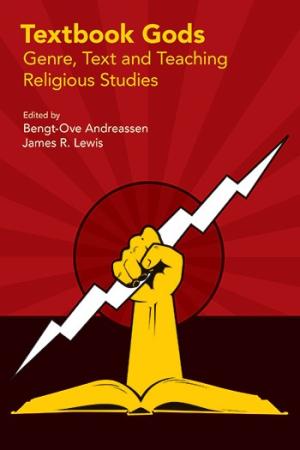
Textbook Gods is a collection of essays by predominantly European scholars of religion on the use of textbooks in primary, secondary, and post-secondary educational settings. Textbooks are understood to be books written primarily for classroom teaching that convey “key knowledge” within a given academic discipline (2). As such, textbooks generally present disciplinary knowledge as stable, firmly established, and definitive. The essays in this volume wrestle, first, with the problems of bias and essentialism in such authoritative, institutionally-sanctioned books. By extension, they also consider the impact of religious studies textbooks in reproducing knowledge of religion in the public sphere. Satoko Fujiwara argues in her essay, for instance, that the religion textbooks used in secular Japanese public schools prioritize world religions over ethnic religions and provide monothetic and essentializing accounts of these religions (for example, Christianity is love, Buddhism compassion, Islam obedience). Likewise, in their contributions James Lewis and Carole Cusack criticize textbooks for validating students’ ethnocentric prejudices about sub-Saharan African religions and aboriginal Australian religions. In a somewhat different vein, Bengt-Ove Andreassen critiques the way that introductory Norwegian textbooks present “religion” as a positive, universal phenomenon that is necessary for human fulfillment and flourishing. Other essays have a more methodological focus, discussing the ways that scholars of religion can assess religion textbooks, both as teaching resources and as indices of the status of scholarship on religion. Katharina Frank outlines a theoretically-informed methodology for assessing the ways that a new Swiss world religions textbook frames the phenomenon of religion. Mary Hayward surveys the use of visual aids in four textbooks that are used in England’s secondary school religious education courses, tabulating types of images and their relation to the text. She calls for a stronger interrelation between text and image because the privileging of text mirrors the privileging of the intellectual over the material in the study of religion. The essays in this volume are generally of good quality: they are well written, they fully contextualize the textbooks that they discuss, and they engage contemporary debates in the scholarship of religion (for example, on the public role of religion in secularizing societies; on the utility of “religion” as an analytical category). This volume should not be seen as an aid for teachers of religion who are considering which textbooks to use in their classes. Though the essays in it discuss many different textbooks at length, the primary topic is not their specific merits and demerits, but rather the role of textbooks as a genre in the production of public knowledge of religion. I would strongly recommend this book for experienced scholar-teachers who are reconsidering how they use textbooks, or even if they should use textbooks at all. The range of materials covered by the essays, and the diversity of opinions they present, make Textbook Gods a valuable resource.
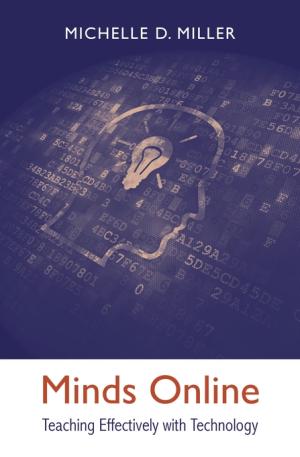
Do students learn as well online as they do in the face-to-face classroom? Miller argues not only that they can, if the instruction is well-designed, but also that online tools and resources are uniquely able to deliver instructional experiences that take advantage of the innate properties of human learning. “[W]hat technology allows us to do,” she claims, “is amplify and expand the repertoire of techniques that effective teachers use to elicit the attention, effort, and engagement that are the basis for learning” (xii). Miller realizes that many faculty do not share her positive view of technology in instruction, however. She opens her book by targeting that resistance with well-reasoned and supported counterarguments: in chapter 1, she counters the fear that teaching with technology is a faddish, passing phenomenon with a recounting of its potential lasting value to both administrators and instructors; in chapter 2, she presents evidence for the effectiveness of online learning and against typical worries about its effects on students; and in chapter 3, she debunks several major myths about learners and computing that have made instructors skeptical or misdirected their efforts. Having assuaged common concerns about instructional technology, Miller moves on in chapters 4 through 8 to discuss current psychological theory on the functioning of attention, memory, reasoning, the effect of multimedia elements on learning and motivation, paired in each case with practical strategies to help online instruction optimize these elements. Her evidence is compelling even as it is presented at an accessible level for an audience with little to no background in psychology. Finally, in chapter 9, she presents possibly the most valuable portion of the entire work: a demonstration of all of her principles in practice, in the form of a sample design process and syllabus annotated to show their use of cognitive best practices. The value of Miller’s overall guidance is only slightly undermined by its fuzzy definition of learning for these purposes. Even as she describes how technology can impact learning, learning itself seems to be equated variously with retention, course completion, grades, and reasoning at different points in the text. In all fairness, each of these measures may well suffice at times for the instructor of a large introductory psychology class, which is the primary use case Miller discusses in this book; and to her credit, she does acknowledge the limitations of each of these as measures of student learning, and also explicitly notes the need for learning experiences that foster deep critical thought, and that engage students at the highest levels of Bloom’s Taxonomy. Nonetheless, a more intentional definition of what is meant by learning would do a great deal to strengthen her argument that online resources can support it. Despite this limitation, however, this book is a useful, readable guide to an area of instruction whose study is still in its early stages, unusually and gratefully practical even while firmly grounded in theory. It provides a valuable reframing of, and supplement to, the core principles of instructional design, and I expect it to inform my online and even face-to-face instructional practice for some time to come. I would recommend it for any academic library and for the personal collection of any instructor teaching, or considering teaching, in an online or blended environment.
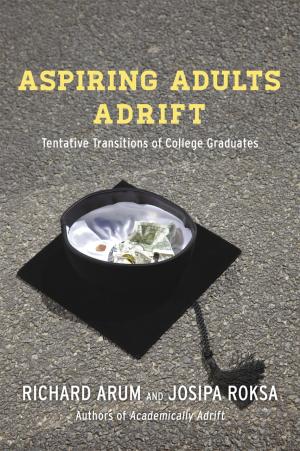
Aspiring Adults Adrift: Tentative Transitions of College Graduates, by Richard Arum, professor in the Department of Sociology at NYU and senior fellow at the Bill and Melinda Gates Foundation, and Josipa Roska, associate professor of sociology and education and associate director of the Center for Advanced Study of Teaching and Learning in Higher Education at the University of Virginia, is the much-anticipated sequel to the authors’ celebrated, often cited, and hotly debated Academically Adrift: Limited Learning on College Campuses (2011), which documented in great detail the academic gains – and stagnation – of some 2,300 students of traditional college age enrolled at a range of 4-year college and universities. In the 2011 report, students were measured on gains in critical thinking, analytical reasoning, and other “higher level” skills taught at college, and the results were not encouraging. The most often-cited findings included: 45 percent of students “did not demonstrate any significant improvement in learning” during the first two years of college; and 36 percent of students “did not demonstrate any significant improvement in learning” over four years of college. The main culprit for students’ lack of academic progress, the authors claimed, is lack of rigor, particularly with respect to critical reading and analytical writing. Aspiring Adults Adrift tracks the same cohort of undergraduates out into the working world into (what should be) adulthood, and documents their struggles to make the transition to traditional adult roles. The results of this follow-up study are no more inspiring: 24 percent of graduates living at home with their parents; 74 percent of graduates receiving financial support (in some cases quite substantial) from their families; and 23 percent of graduates in the labor market who are unemployed or underemployed. Despite these discouraging findings, however, the authors report that these graduates are quite optimistic about their futures, 95 percent of them reporting that they expect their lives to be better than their parents. The authors set out to determine what accounts for this optimism. One compelling argument put forward by Arum and Roksa is a theory given recent prominence by social psychologist Jeffrey Arnett in his notion of “emerging adulthood,” a new demographic identified as the period between eighteen and twenty-five years of age, a period of “self discovery” and “self exploration” during which adolescence is extended; a period in which these aspiring college-educated young adults struggle with identity exploration, instability, and self-focus, often do not live independently, are un- or underemployed, and do not have the income to be financially self-sufficient. Arum and Roksa put the blame, fairly or unfairly, largely on institutions of higher education, and their commitment to “promoting a personnel perspective that celebrate(s) self-exploration and social well-being” (11) – put more bluntly, that caters to the ethos of consumer society, and a broader “cultural adoption of a therapeutic ethic” (9): “both the students and institutions have put such a high focus on social engagement as a key component of higher education that the students have come to believe that it’s those skills and networks that are going to be critically important for their lifelong success.” The evidence, however, suggests otherwise; that the emphasis on social “engagement” at the expense of academic rigor is not achieving these results. “Widespread cultural commitment to consumer choice and individual rights, self-fulfillment and sociability, and well-being and a broader therapeutic ethic leave little room for students or schools to embrace programs that promote academic rigor” (136). It is, the authors contend, ultimately a mutually-reinforcing race to the bottom: “This may reflect the self-centered nature of emerging adulthood,” they write, “or the education system’s decreasing emphasis on preparing individuals for participating in a democratic society. Whatever the underlying causes of this tendency, colleges could adopt a more productive role in the development of values and dispositions for greater engagement with the world at large” (113). In essence, the responsibility is ours, as educators, to reject consumer satisfaction as “a worthy aim for colleges and universities” and “do more to help students develop the attitudes and dispositions they need to reach their aspirations” (134). Wherever the solutions lie to the oft-cited “crisis in higher education,” the authors of Aspiring Adults Adrift have once again contributed significantly to the centrality of educator-led reform.
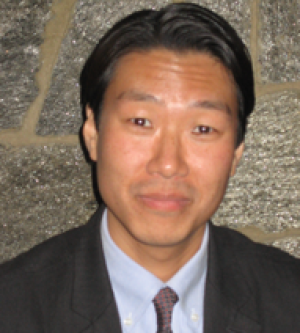
KC Choi Associate Professor, Department of Religion Seton Hall University I was horrified to discover that Dylann Roof regarded Asians as inherently racist and thus possible allies to white supremacist causes. That opinion received little media attention, except for spotty clusters throughout social networking sites. And while Roof’s assessment of Asians is nothing short of galling, I also found them disquieting; it was the words of a white supremacist mad man that had uncomfortably recalled a specific set of experiences in my course “Race, Politics, and Theology.” Students in my course have mirrored the relative racial and ethnic diversity of...

Theological schools and seminaries have been relative latecomers to rigorous practices of educational assessment. There are varied and plausible reasons for that which "make sense." However, in the current age of higher accountability to accrediting agencies, stakeholders, and educational consumers,...
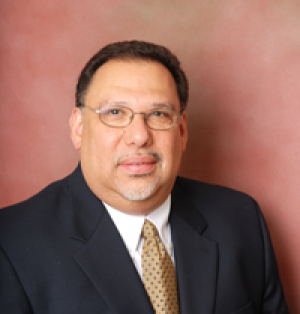
Dr. Efrain Agosto New York Theological Seminary We gathered for our regular summer session class on a Thursday evening at New York Theological Seminary, June 18, the night after the horrific shootings in an AME Church in Charleston, South Carolina. Three of my six students for the class were out sick; no doubt saddened by the tragedy of the night before, perhaps even so adversely affected that they had a kind of visceral, physical reaction that affected their health. Six of the nine African Americans murdered Wednesday night in Charleston were women, by all accounts gifted and faithful leaders of
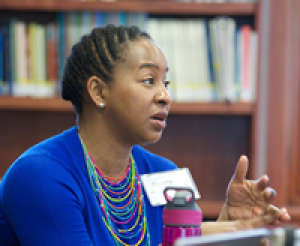
Nyasha Junior, Ph.D Assistant Professor of Hebrew Bible Temple University Department of Religion The Rachel Dolezal story is all over the news. The story is a horror show for many reasons, but as Dolezal was an African-American Studies instructor at Eastern Washington University, her story brings up important issues of race in the classroom. It has me wondering how my colleagues think about and handle these issues. What does the Dolezal story bring up for you as an educator? What assumptions do your students make about you based on your body? What assumptions do students or other scholars make about
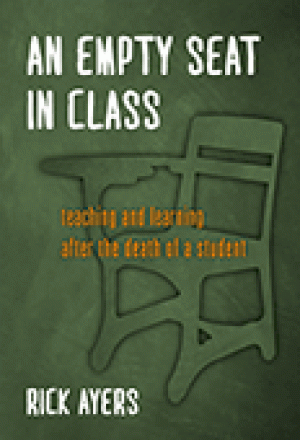
An Empty Seat in Class emerges in the midst of the increasing deaths of young black and brown men and women around the country, and it seems rather prescient as the debate about responses to this violence emerges and takes center stage. While Ayers addresses the larger context of death and particularly the deaths of marginalized students in oppressed communities, this book is a shared meditation on grief and the role of the secondary school teacher in processing, responding to, and teaching alongside death and grief. It is shared because Ayers not only reflects on his personal stories and experiences in the classroom, but he invites a broad selection of teachers involved in secondary education to reflect on their experiences of and responses to the loss of a student. The book is framed around the recent death of one of Ayers’s students and his community and school’s response to this loss. Ayers is clear that it is not a how-to book and rather than focus on prescriptions or even overt psychological or pedagogical advice he turns to the practice and ritual of writing and reflecting. Ayers reminds that “our salvation lies more in literature and stories than psychological and political analysis”(6) and provides us with stories, engaging literature, and reflections as the reader proceeds through the tragic life cycle of a community’s, specifically a teacher’s, response to the death of student. The first half of the book outlines the complexity of dealing with urban violence and identifies the multiple issues faced by teachers, specifically those from vastly different socio-economic and political contexts than their students. Ayers does not shy away from the myriad ways that students and teachers respond to the “mystery” of death. He and his contributors look at the emergence of “murder economies” (23), individual and institution missteps, white privilege, and the simplistic and problematic assignation of blame and innocence that often permeates responses to death in urban communities and classrooms. While the first half of the book explicitly examines death and dying in urban, marginalized communities, the last section looks at mass school shootings and mortality in its many forms. By the end of the text, Ayers is clear that death is a specter that no one can escape and that all teachers and schools need to critically reflect on it together. Ayers emphasizes that “There are so many other ways that the terrible finger of fate points at our students. And for each of these tragedies, there is a classroom; there is a teacher” (88). I am deeply sympathetic to Ayer’s project, and the book makes a convincing argument for this type of intervention and its format. His work succeeds as a “meditation with and for teachers” (7) during these tragic times. However, the text also suggests that there is a better way to deal with death in our school communities, and I think more explicit engagement with successful models of intervention and more context about Ayers’s school and community would strengthen the book and would add nuance and depth to its focus on and argument for the inclusion of narrative and literature in our responses to death. Overall, Ayers’s multi-layered analysis that includes reflection, memorial, research, and deep attention to literature on death and grief will be an invaluable resource for teachers and will hopefully spur additional research on the practical and pedagogical issues that arise as a result of a student’s death.
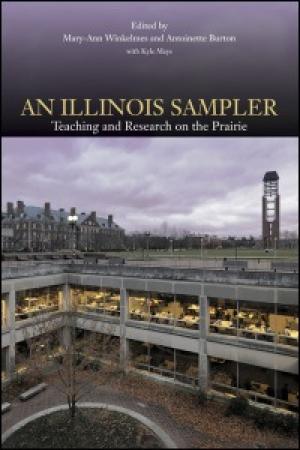
While this book is dedicated to students, chapters showcase the dedication of professors to providing effective learning formats in diverse fields. An Illinois Sampler: Teaching and Research on the Prairie highlights teaching methods at the University of Illinois that can be applied elsewhere. It would be an excellent book for a new professor, including one looking for field opportunities for their students. The nineteen chapters are very short, but in essence provide quickly consumable case studies of everything from inmate education and research abroad to flipped classrooms and the standard lecture format. It would work well for a small group discussion of education students who could read it together while in session. Topics for small group discussion could include holistic education, teaching from the sciences and humanities, and student-centered learning. Higher education administrators might also appreciate an overview of some of the programs at the University of Illinois. However, these chapters are just glimpses of the authors’ insights; some readers might need to pursue further research. Examples like Rosu’s highlights of the iFoundry program created by the engineering faculty and Denofrio-Corrales and Lu’s innovative Chemistry and Biology of Everyday Life (CBEL) course structure organize around students’ interests. Precisely how they do it could be the theme for another book. Instead of a recipe, we are given a taste of the passion and flavor of University of Illinois teaching practices. This book is dedicated to students. The authors capture a learning environment that alumni and current students can be proud of, but the Illinois Sampler shows that across the spectrum, the professors dedicate their work to their students. In pages of reflection by faculty in the humanities and sciences serving traditional and nontraditional students, teaching with traditional and nontraditional methods, An Illinois Sampler teaches what it means to teach: It is a statistics professor trying to make numbers lead to a better quality of life. It is a lecturer uncovering the living complexity of once simple fairy tales. It is an education behind bars professor who liberates minds. It is the professor learning from collaboration with their students, and reigniting a teaching passion for and by them. This book acts as a sampler in its composition, moving from highlights in music to math to literature to science to dance. Unconventionally juxtaposed, one discipline does not outweigh the other. Everyone will be able to find something appealing in it because of the broad inclusion, and, readers will gain knowledge from perspectives across disciplines. It should also be noted that contributors “vary not only by expertise but also in age, gender, nationality, career stage, and even their position in the academic hierarchy” (ix). The real success of this book is the variety. An Illinois Sampler is both a recommended read and endeavor.